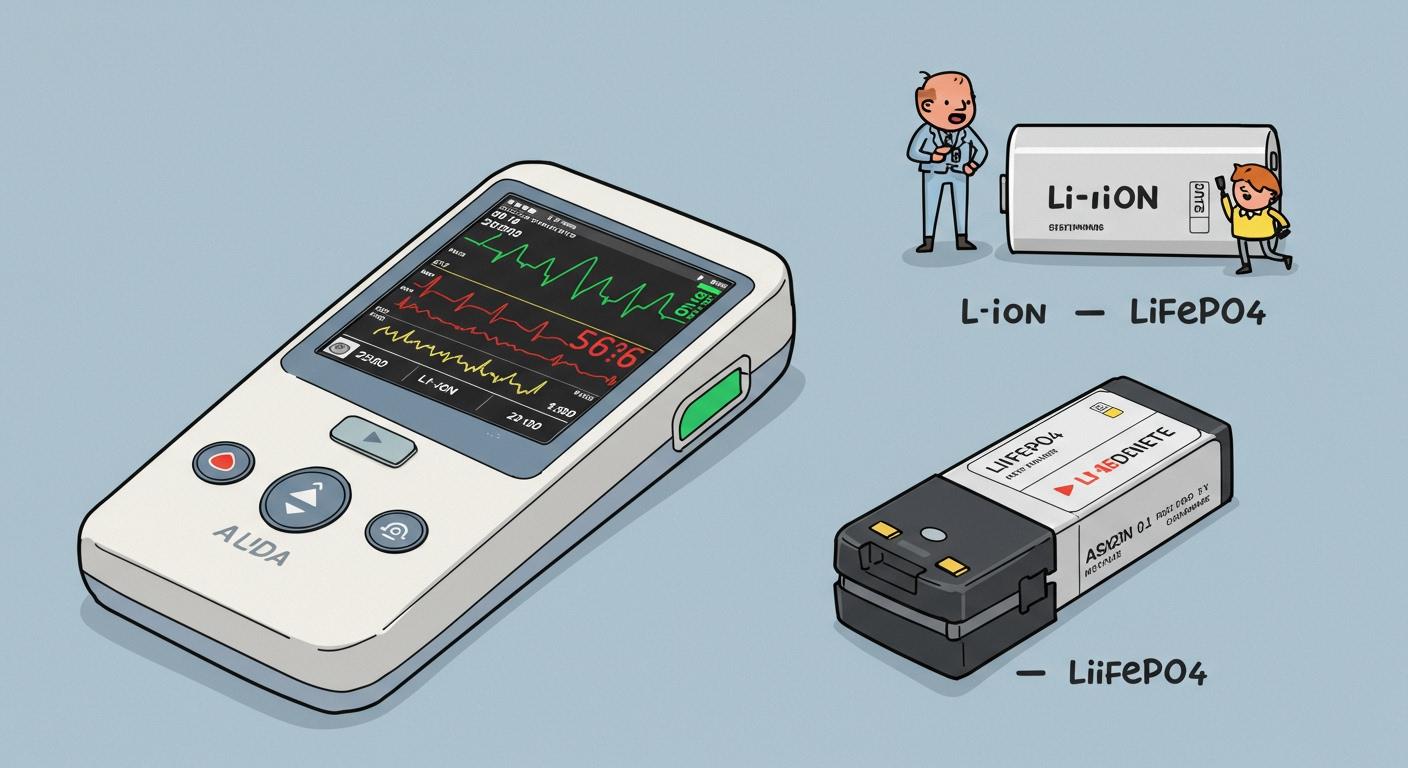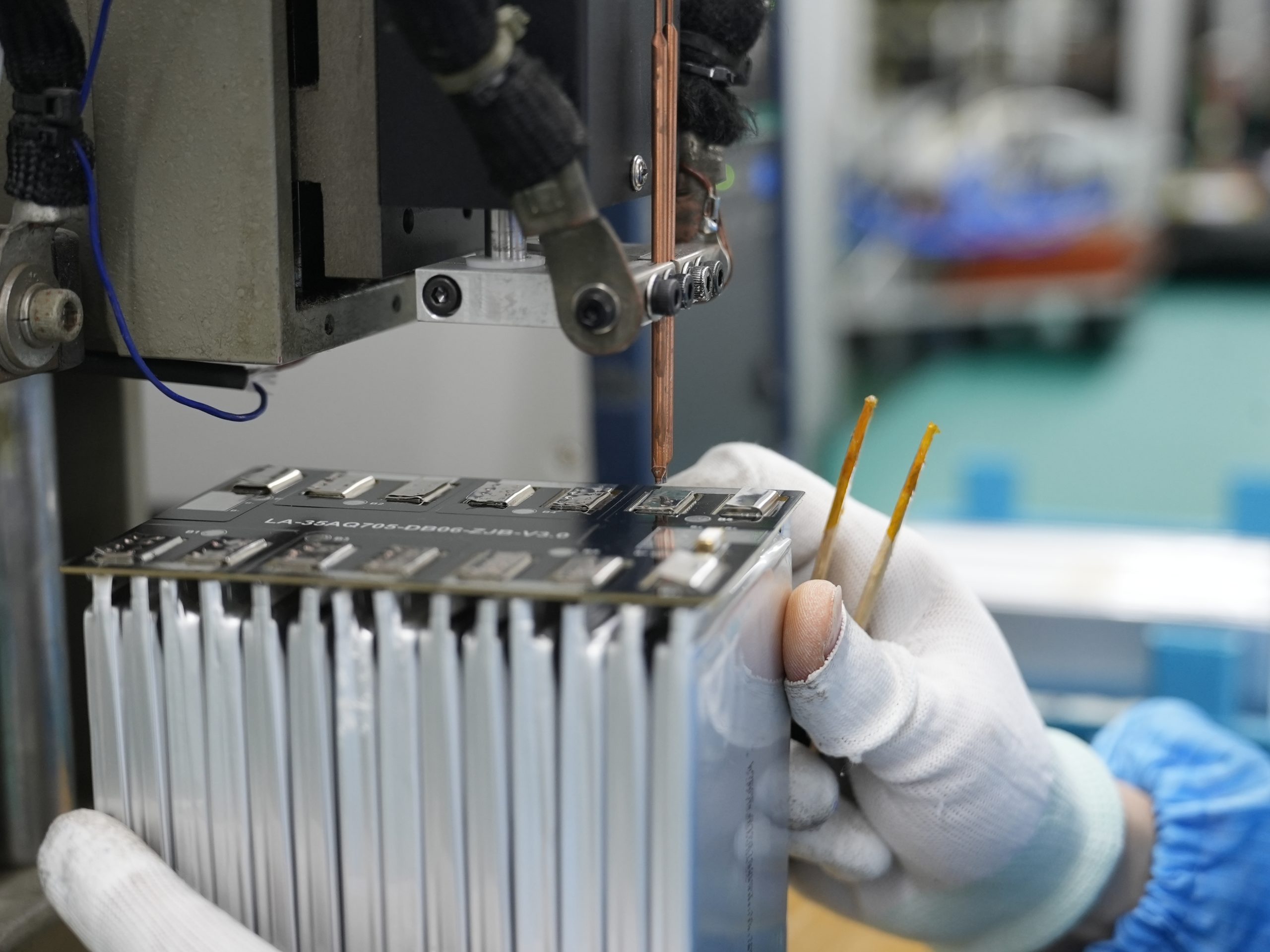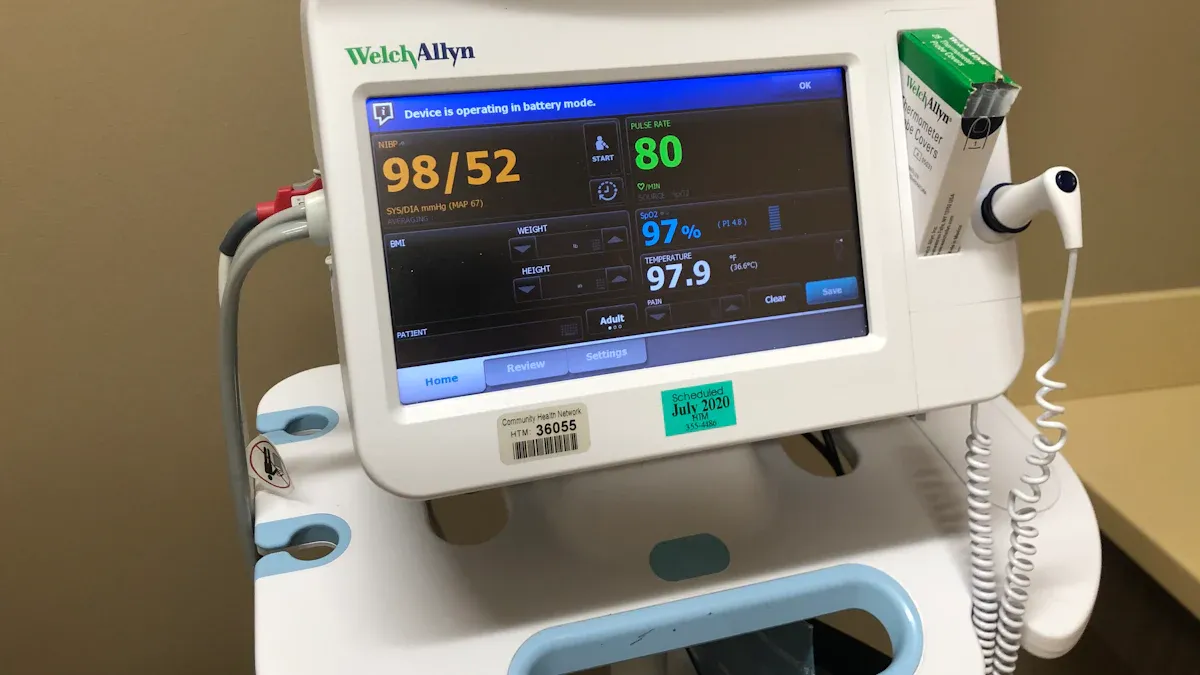
You often face critical choices when selecting the right chemistry for portable medical devices. Safety features, battery performance, and battery lifespan matter most. LiFePO4 batteries offer lower failure rates and higher resistance to thermal events. The global medical battery market reached $2.5 billion in 2023, highlighting the importance of choosing the right battery for capacity, energy density, and performance. Medical device reliability depends on battery capacity and energy storage.
Key Takeaways
LiFePO4 batteries offer superior safety and longer lifespan, making them ideal for medical devices where reliability is critical.
Lithium-ion batteries provide higher energy density, suitable for compact designs, but require careful management to prevent safety risks.
Consider both initial costs and long-term value when choosing batteries; LiFePO4 may have a higher upfront cost but offers better longevity and lower maintenance.
Part1: Right Chemistry Overview
1.1 Lithium Ion Battery Basics
You encounter lithium ion batteries in most portable electronics. These batteries use lithium cobalt oxide as the cathode. You benefit from their higher energy density, which means you can design devices with more capacity in a smaller package. Lithium ion batteries deliver strong performance and support high energy storage needs. However, you must consider safety risks. These batteries are prone to thermal runaway, which can lead to overheating or fire if not managed properly. Lifespan is another factor. Lithium ion batteries typically last between 300 and 1,000 cycles. You may find their structural stability affected by non-linear expansion during charging and discharging.
Lithium ion batteries offer higher energy density but require careful management for safety and lifespan.
Feature | Li-ion (LiCoO2) | LiFePO4 |
|---|---|---|
Safety | Prone to thermal runaway | More thermally and chemically stable |
Structural Stability | Non-linear expansion affects integrity | Structurally stable across states |
Energy Density | Higher energy density | Approximately 14% lower energy density |
Resilience to Oxygen Loss | Decomposes at high temperatures | Harder to ignite, resilient to oxygen loss |
Lithium Retention | ~50% lithium remains in cathode | No lithium remains in cathode |
1.2 LiFePO4 Batteries Basics
LiFePO4 batteries, also known as lithium iron phosphate batteries, have become popular for medical equipment. You gain significant safety advantages with lifepo4 batteries. These batteries resist thermal events and remain structurally stable across charge states. Lifepo4 batteries offer a much longer lifespan, often reaching 3,000 to 10,000 cycles. You sacrifice some energy density, as lifepo4 batteries provide about 14% less than lithium ion batteries. However, you benefit from reliable capacity and consistent performance over time. Lifepo4 vs lithium ion batteries show clear differences in safety, lifespan, and energy density.
Battery Type | Energy Density (Wh/kg) | Lifespan (Cycles) |
|---|---|---|
Li-ion | 150–220 | 300 to 1,000 |
LiFePO4 | 90–120 | 3,000 to 10,000 |
When you compare lifepo4 vs lithium ion batteries, you see lifepo4 batteries excel in safety and lifespan. Lithium ion batteries provide higher energy density and capacity, but lifepo4 batteries deliver superior reliability for medical devices. If you need custom battery solutions for your application, click here for consultation.
Part2: Pros & Cons Table

2.1 Lithium Ion Battery Pros & Cons
You rely on lithium ion batteries for handheld medical equipment because they deliver high energy density and strong capacity. These batteries support compact device designs and provide reliable energy storage. You benefit from their low maintenance and lack of memory effect, which helps maintain consistent performance. However, you must address safety concerns. Lithium ion batteries can experience thermal runaway, leading to overheating or fire. You also face higher costs and limited material availability. Lifespan varies, with most lithium ion batteries lasting between 300 and 2,000 cycles.
Lithium ion batteries offer excellent energy density and capacity, but you must prioritize safety management and monitor lifespan.
Pros | Cons |
|---|---|
Prone to thermal runaway and overheating | |
Strong capacity for compact devices | Higher cost compared to other chemistries |
No memory effect, low maintenance | Limited material availability |
Reliable energy storage for high-power needs | Lifespan typically 300–2,000 cycles |
Supports rechargeable battery applications | Extremely flammable, risk of combustion |
2.2 LiFePO4 Batteries Pros & Cons
You choose lifepo4 batteries for medical devices when safety and lifespan matter most. Lifepo4 batteries, based on lithium iron phosphate chemistry, resist thermal events and remain structurally stable. You gain a longer lifespan, often reaching 3,000 to 10,000 cycles. These batteries provide consistent capacity and reliable performance over time. Lifepo4 batteries have lower energy density than lithium ion batteries, so you may need larger battery packs for the same capacity. However, you benefit from superior safety and minimal risk of combustion.
Lifepo4 batteries excel in safety and lifespan, making them ideal for medical equipment where reliability is critical.
Pros | Cons |
|---|---|
Exceptional safety and thermal stability | Lower energy density (90–120 Wh/kg) |
Long lifespan (3,000–10,000 cycles) | Larger size/weight for same capacity |
Structurally stable across charge states | Higher initial investment |
Reliable capacity and performance | Less suitable for ultra-compact devices |
Minimal risk of combustion |
You see lifepo4 vs lithium ion batteries differ in safety, lifespan, and energy density. Lifepo4 batteries provide unmatched safety and lifespan, while lithium ion batteries offer higher energy density and capacity. When you compare lifepo4 vs lithium ion, consider your device’s requirements for safety, performance, and battery lifespan.
Part3: Cost & Value
3.1 Lithium Ion Battery Cost
You often choose lithium ion batteries for handheld medical equipment because of their lower upfront cost. Li-ion batteries allow you to keep initial expenses down, which can help when you need to manage tight budgets. These batteries offer high energy density, so you can design compact devices without sacrificing capacity. However, you must consider the total cost over the battery’s lifespan. Lithium ion batteries typically last between 300 and 2,000 cycles. You may need to replace these batteries more frequently, which increases long-term costs. Safety management also adds to your expenses, as you must invest in protective circuits and monitoring systems to reduce risks. When you factor in maintenance and replacement, the initial savings from li-ion batteries may decrease over time.
3.2 LiFePO4 Batteries Value
Lifepo4 batteries require a higher initial investment, but you gain significant value over the product lifecycle. These batteries deliver a much longer lifespan, often reaching 3,000 to 10,000 cycles. You benefit from lower degradation rates, which means fewer replacements and less downtime for your medical devices. Lifepo4 batteries provide exceptional safety, reducing the need for complex safety systems. Over time, the reliability and stability of lifepo4 batteries offset the higher upfront cost. In medical device applications, you achieve better long-term value and consistent performance. Lifepo4 batteries support your need for dependable, rechargeable power solutions that prioritize safety and lifespan.
When you compare lithium ion batteries and lifepo4 batteries, consider not just the initial price but the total value across the battery’s entire service life.
Key points to consider:
Lifepo4 batteries offer greater cost-effectiveness over time due to longer lifespan.
Lithium ion batteries provide affordability upfront but may require more frequent replacement.
Safety and performance remain critical for both battery types in medical applications.
Part4: Suitability for Medical Devices

4.1 Regulatory Compliance
You must select the right chemistry for batteries in handheld medical equipment to meet strict regulatory standards. In major markets such as the US, EU, and China, you need to follow specific rules for battery safety, removability, and documentation. The EU Battery Regulation requires that, starting February 18, 2027, batteries in medical devices must be removable and replaceable by end users without special tools. Exceptions exist for professional medical imaging and radiotherapy devices, where independent specialists can replace batteries. Manufacturers must perform conformity assessments, prepare technical documentation, and implement extended producer responsibility.
Key Aspect | Description |
|---|---|
Regulation | EU Battery Regulation for medical technology |
Removability Requirement | From 18 February 2027, batteries must be removable and replaceable by end users without special tools. |
Exceptions | Professional medical imaging and radiotherapy devices are exempt if the battery can be replaced by independent specialists. |
Compliance Obligations | Manufacturers must perform conformity assessments, prepare technical documentation, and implement extended producer responsibility. |
You also need to comply with international safety standards. These include ANSI/AAMI ES 60601-1, IEC 60086-4, IEC 62133, UL 1642, and ISO 7176-25. These standards ensure patient safety and device reliability. You must confirm that batteries perform well under diverse environmental conditions and meet FDA and IEC requirements.
Key standards for battery selection:
ANSI/AAMI ES 60601-1: Risk management and safety assessments for medical electrical equipment.
IEC 60086-4: Safety of lithium batteries for primary batteries.
IEC 62133: Safety requirements for secondary cells and batteries.
UL 1642: Guidelines for lithium batteries in medical devices, including lithium content limits.
ISO 7176-25: Standards for batteries and chargers for powered wheelchairs.
You should always verify that your batteries meet these standards to ensure the right chemistry supports safety features and regulatory compliance.
4.2 Charging & Maintenance
You need to follow best practices for charging and maintaining batteries in portable medical devices. For lithium-ion batteries, use a charger designed specifically for this chemistry. The ideal charging procedure involves two stages: constant current and constant voltage. You should keep the maximum charging current between C/4 and C/2 to preserve battery lifespan and minimize heat generation. Avoid charging below 0°C to prevent lithium plating and potential damage. Ensure uniform temperature distribution within the battery pack to slow degradation.
Recommended charging protocols for lithium-ion batteries:
Use a charger designed for lithium-ion batteries.
Charge in two stages: constant current, then constant voltage.
Keep charging current between C/4 and C/2.
Avoid charging below 0°C.
Maintain uniform temperature in the battery pack.
You may encounter maintenance issues with lithium-ion batteries, such as rapid discharge, failure to charge, unexpected shutdowns, overheating, and swelling. These problems can affect device performance and safety. You must monitor batteries regularly and replace them when necessary to maintain reliability in medical devices.
Maintenance Issue | Description |
|---|---|
Rapid Discharge | Batteries deplete quickly, affecting device performance. |
Failure to Charge | Issues with the charger or battery prevent proper charging. |
Unexpected Shutdowns | Devices may turn off unexpectedly due to battery or software issues. |
Overheating | Excessive heat generation can lead to thermal runaway, posing safety risks. |
Swelling | Indicates gas buildup, which can lead to leaks or explosions if not addressed immediately. |
LiFePO4 batteries offer easier maintenance due to their stable chemistry and longer cycle life. You experience fewer issues with overheating and swelling. These batteries provide consistent capacity and reliability, reducing downtime for your medical devices.
Regular monitoring and proper charging protocols help you maximize battery safety and extend the lifespan of your portable medical equipment.
4.3 Application Scenarios
You must choose the right chemistry for batteries based on the specific needs of your medical devices. Lithium-ion batteries are favored in portable medical equipment such as mobile X-ray units, infusion pumps, defibrillators, and patient monitors. These batteries deliver high energy density, compact size, reliability, and fast charging capabilities. You benefit from efficient performance in applications where portability and quick turnaround are essential.
Common medical devices using lithium-ion batteries:
Mobile X-ray units
Infusion pumps
Defibrillators
Patient monitors
You also find lithium-ion batteries in temperature checkers and other portable devices. Their high energy density and compact form factor make them suitable for medical, consumer electronics, and industrial applications.
LiFePO4 batteries excel in scenarios where safety and long cycle life are critical. You often use these batteries in infusion pumps, robotics, and battery-powered solutions. Their stable platform voltage and enhanced safety features make them ideal for medical, robotics, and infrastructure applications. You can explore custom battery solutions for your specific needs by visiting custom consultation.
Feature | Application |
|---|---|
High cycle life | Infusion pumps |
Stable platform voltage | Battery-powered solutions |
Enhanced safety | Robotics |
Moderate energy density | Various handheld medical devices |
You must consider how battery chemistries impact the reliability of your medical devices in clinical settings. Energy density affects device functionality and portability. Cycle life influences replacement schedules and operational costs. Temperature sensitivity impacts performance in varied environments. Safety mechanisms are essential for patient safety and device reliability.
Performance Characteristic | Impact on Reliability |
|---|---|
Energy Density | Affects device functionality and portability |
Cycle Life | Influences replacement schedules and operational costs |
Temperature Sensitivity | Impacts performance in varied environments |
Safety Mechanisms | Essential for patient safety and device reliability |
You should also evaluate environmental impacts when disposing of batteries. Lithium-manganese dioxide batteries pose greater risks than rechargeable lithium-ion batteries due to violent reactions with air or water. The hazard potentials of rechargeable lithium batteries depend on metal concentrations, which can affect human health and the environment. Cumulative potential impacts highlight the need for comprehensive data on battery disposal.
Selecting the right chemistry for your batteries ensures optimal safety, reliability, and performance in portable medical devices. You can improve emergency readiness and reduce risks by following best practices and regulatory standards.
If you need advanced battery management systems (BMS) for your medical, robotics, or infrastructure projects, visit BMS and PCM solutions. For custom battery packs tailored to your application, request a custom consultation.
You should prioritize batteries with superior safety and long lifespan for handheld medical equipment. LiFePO4 batteries excel in safety, durability, and reliability, making them ideal for devices needing ultra-high safety. Li-ion batteries suit applications demanding high energy density and compact design. Evaluate your device’s requirements for safety, performance, and cost.
Factor | Description |
|---|---|
Safety | Prevent risks like thermal runaway |
Performance | Deliver reliable power |
Durability | Resist stress, moisture, and corrosion |
Cost | Balance initial and long-term expenses |
You enhance reliability and safety by selecting the right batteries for your application.
FAQ
What makes LiFePO4 batteries safer for handheld medical equipment?
LiFePO4 batteries resist thermal events and remain stable during operation. You reduce risks of overheating and fire in your medical devices.
Tip: Always choose batteries with proven safety records for clinical environments.
How do you maximize the lifespan of batteries in portable medical devices?
You should follow manufacturer guidelines for charging and maintenance. Regular monitoring helps you prevent early battery failure and extend service life.
Practice | Benefit |
|---|---|
Proper charging | Longer lifespan |
Routine checks | Reliable batteries |
Enhanced safety |
Can Large Power customize batteries for unique medical device needs?
Yes, Large Power offers custom battery solutions for medical devices.




